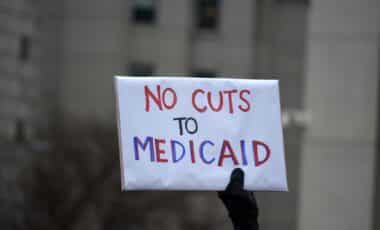The United States is facing a dilemma over poultry vaccination as egg prices soar. While vaccinating against bird flu could prevent mass culling and stabilise supply, concerns over trade restrictions and virus monitoring have slowed progress.
The ongoing outbreak of avian influenza has led to the deaths of over 166 million birds in the US since 2022, the majority being egg-laying hens.
This has been a major factor behind the sharp rise in egg prices, which have reached an average of $5.90 per dozen, according to The Independent. Some parts of the country have reported even higher prices, adding pressure on policymakers to consider vaccination as a potential solution.
Despite these economic pressures, US authorities remain cautious. The poultry industry, particularly meat producers, fears that vaccination could disrupt exports worth billions of dollars annually.
Additionally, concerns about how to effectively monitor vaccinated birds without allowing the virus to spread undetected have further complicated the decision-making process.
Economic Impact of Bird Flu and Industry Resistance
Egg and turkey producers have been the hardest hit by bird flu outbreaks, with their businesses largely dependent on the domestic market.
By contrast, meat chicken producers—who collectively exported $4.7 billion worth of poultry last year—are the most resistant to adopting vaccination, fearing potential trade restrictions from international buyers.
According to Simon Shane, a poultry veterinarian at Egg-News.com, the government’s reluctance to change its culling policy is primarily due to opposition from the meat poultry sector. “Basically, this is a political issue, and this only came to a head because eggs are at $8 to $9 a dozen, and it’s embarrassing the government,” he said.
Former USDA chief veterinary officer John Clifford also noted that international trade remains a central concern.
“What the industry wants is the ability to develop the strategic plan to share that with the trading partners and then find out what kind of impact that will have on trade,” he explained. Until a reliable system is in place to track infections in vaccinated flocks, exporters worry that foreign markets will impose bans on US poultry products.
Challenges in Implementing a Vaccination Strategy
The main barrier to poultry vaccination in the US is the difficulty of distinguishing between birds that have been vaccinated and those that have been infected with bird flu.
Unlike countries such as China and Mexico, which have longstanding vaccination programs, the US currently relies on culling infected flocks to prevent the virus from spreading.
Mexico vaccinates its poultry but does not slaughter infected birds, allowing the virus to persist within flocks. China, on the other hand, still culls affected flocks despite vaccinating, a strategy that has helped to contain outbreaks more effectively, according to industry experts.
If the US were to introduce vaccines, it would likely need to adopt a similar approach to China’s, ensuring infected birds are still removed from the supply chain.
Another challenge is the method of administering the vaccine. Many egg producers argue that individual injections are impractical for large flocks and have suggested alternatives such as adding the vaccine to chicken feed or water. However, no large-scale system for this exists yet.
Dr Carol Cardona, a bird flu expert at the University of Minnesota, raised concerns over the financial costs of monitoring vaccinated birds.
“People have talked about how expensive it would be to monitor vaccinated populations. And it would be. But where do we want to spend our money?” she asked. “We’re spending our money hand over fist right now in depopulation and to buy eggs for breakfast.”
For now, the US Department of Agriculture (USDA) has announced a $100 million investment to study bird flu vaccines, as part of a larger $1 billion effort to improve farm protections. However, with Easter—a peak period for egg demand—fast approaching, significant price relief remains uncertain.









